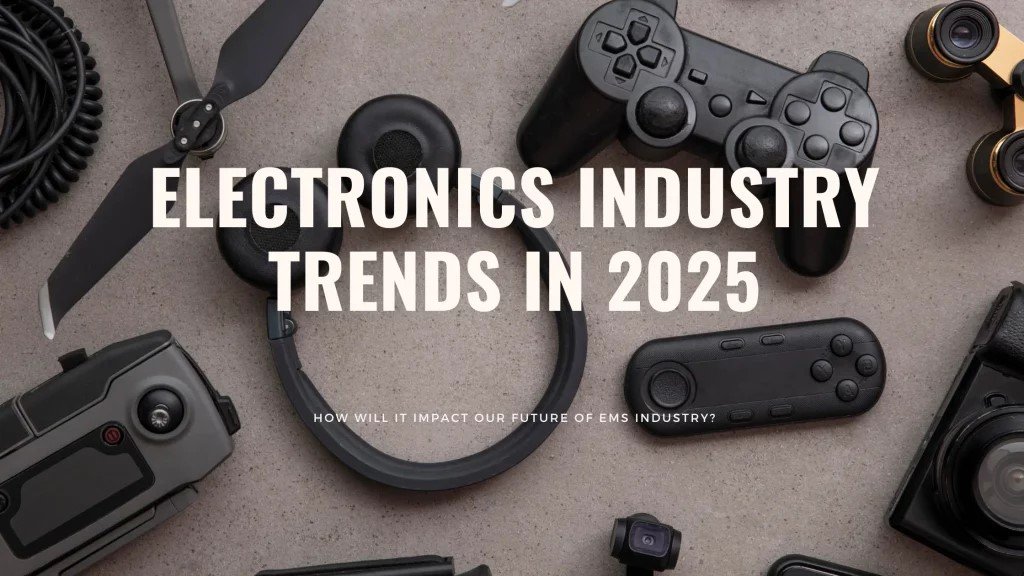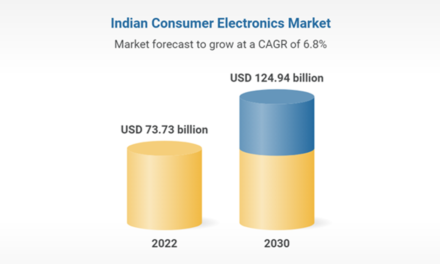The future of electronic product development is set to be shaped by several emerging technologies and evolving consumer needs. As innovation continues to accelerate, the following trends are likely to dominate the next phase of electronic product development:
1. AI Integration and Smart Features:
- AI and Machine Learning (ML) in Electronics: Artificial intelligence (AI) and machine learning (ML) are becoming integral to electronic products, enabling smarter devices that can learn from user behavior, optimize performance, and anticipate needs. For example, AI-powered voice assistants, smart home devices, and even smart appliances will continue to evolve, making everyday tasks more automated and efficient.
- Edge Computing: Devices are increasingly equipped with processing power to handle data locally, allowing for real-time decision-making and minimizing latency. This trend is essential for applications like autonomous vehicles, robotics, and smart cities.
2. 5G Connectivity and Beyond:
- Faster Connectivity: With the rollout of 5G networks, electronic products will become even more connected and capable of handling high-bandwidth applications. This will enable enhanced streaming, IoT devices, and connected smart devices to operate more efficiently with faster data transfer rates and low latency.
- 6G and Future Networks: Beyond 5G, 6G technology is being researched, and it promises ultra-high-speed connectivity, expanded IoT capabilities, and new applications such as holographic communication and real-time remote control of robotic systems.
3. Miniaturization and Wearable Technology:
- Smaller, More Powerful Devices: The trend toward miniaturization will continue, enabling the development of smaller, more powerful, and feature-rich devices. This is seen in the evolution of wearable electronics (e.g., smartwatches, fitness trackers, and AR glasses), which are becoming increasingly compact without sacrificing performance.
- Flexible Electronics: Innovations in flexible and stretchable electronics will allow for the development of new wearable devices, smart textiles, and biomedical applications, expanding the scope of consumer and industrial applications.
4. Sustainability and Eco-Friendly Design:
- Sustainable Materials: With growing environmental concerns, electronics manufacturers will focus more on using sustainable and recyclable materials in their products. Biodegradable plastics, renewable materials, and energy-efficient components will become a priority in product design and manufacturing.
- Energy Efficiency: The demand for energy-efficient electronics will continue to rise, driven by both regulatory requirements and consumer preferences. Low-power designs, energy-harvesting technologies, and more efficient power management systems will be integral in future product development.
- E-Waste Reduction: Electronics companies will prioritize the reduction of electronic waste (e-waste) by designing products with longer lifespans, easier recyclability, and improved recycling infrastructure to handle electronic waste responsibly.
5. Augmented Reality (AR) and Virtual Reality (VR):
- Enhanced User Experiences: AR and VR technologies will continue to evolve and be integrated into a wide range of products, from gaming and entertainment devices to industrial applications. These immersive technologies will offer new ways to interact with the digital world and enhance productivity, learning, and remote work.
- Mixed Reality (MR): The development of mixed reality (MR), which blends physical and virtual environments, will further transform industries like healthcare, education, retail, and entertainment.
6. IoT Expansion and Smart Everything:
- Smarter Homes and Cities: The Internet of Things (IoT) will continue to expand, with more devices becoming interconnected and offering automated, data-driven functionality. In homes, this means smart appliances, lighting, security systems, and climate control, while in cities, it will lead to smart infrastructure, traffic management, and energy systems.
- Industrial IoT (IIoT): In industrial settings, IoT will drive the next wave of automation and efficiency, with connected devices that enable predictive maintenance, real-time monitoring, and optimization of manufacturing processes.
7. Health and Biotech Integration:
- Health Monitoring Devices: The health and wellness market will see a surge in wearable health monitoring devices, such as smartwatches that measure vital signs, glucose monitors, and wearable ECGs. These devices will integrate deeper with healthcare systems, providing continuous health data that can be analyzed to prevent or manage medical conditions.
- Bioelectronics and Implantable Devices: Developments in bioelectronics will enable devices that can interact with the human body at the cellular level. Implantable medical devices and biosensors will become more advanced, providing new treatments, diagnostics, and personalized healthcare.
8. Quantum Computing and Advanced Processing:
- Quantum Computing: Though still in its early stages, quantum computing holds the potential to revolutionize industries by enabling extremely fast and powerful computations. In the future, it could impact everything from AI to material science and cryptography, making products faster, smarter, and more secure.
- Neuromorphic Computing: Neuromorphic chips, designed to mimic the structure and function of the human brain, are being developed to improve AI and machine learning capabilities. These chips may power next-gen devices capable of advanced cognitive tasks like real-time image recognition and decision-making.
9. Autonomous and Electric Vehicles:
- Electric Vehicles (EVs): The transition to electric vehicles will drive innovation in battery technology, power management systems, and vehicle electronics. This includes developments in fast-charging infrastructure, battery life optimization, and on-board electronics to enhance driving experiences.
- Autonomous Driving: The future of autonomous vehicles will rely heavily on sensors, AI, and data processing to make real-time driving decisions. The development of LiDAR, radar, and other sensing technologies will continue to enhance the performance and safety of autonomous vehicles.
10. Advanced Battery Technology:
- Solid-State Batteries: The next frontier in battery technology is the development of solid-state batteries, which promise higher energy densities, faster charging times, and improved safety over traditional lithium-ion batteries. These batteries could power everything from smartphones to electric vehicles.
- Wireless Charging: Advances in wireless charging technology will make charging more convenient, eliminating the need for physical charging cables and allowing devices to be charged simply by being in proximity to a charging pad or surface.
11. Human-Machine Interaction and Voice Control:
- Voice-Activated Devices: With the rise of voice assistants like Alexa, Google Assistant, and Siri, voice control will become an even more integral part of electronic devices. The future will see more devices with advanced speech recognition capabilities, making it easier for users to interact with everything from home appliances to industrial machines.
- Gesture Recognition: Future electronic devices may also incorporate gesture-based control, allowing users to interact with devices through motion or facial expressions, enhancing accessibility and convenience.
12. Blockchain and Cryptography in Electronics:
- Blockchain Technology: As trust and security continue to be critical, electronics manufacturers may begin incorporating blockchain technology to ensure the authenticity of products, facilitate secure transactions, and protect privacy in IoT and digital systems.
- Cryptocurrency Integration: With the growing popularity of cryptocurrencies, future electronic products might integrate cryptocurrency mining or blockchain-based payment systems.
Conclusion:
The future of electronic product development is being shaped by a convergence of cutting-edge technologies like AI, 5G, IoT, and sustainability efforts. As electronics become smarter, more connected, and more energy-efficient, they will transform not only consumer experiences but also industries ranging from healthcare and transportation to entertainment and manufacturing. Future electronic products will continue to evolve to meet the needs of a more connected, sustainable, and tech-driven world.
Hashtags
#SmartElectronicsFuture #AIInElectronics #AIProductDevelopment #ArtificialIntelligenceInTech #AIEnabledDevices #SmartProductDesign #AIInConsumerElectronics #NextGenAIDevices #AIForInnovation #AIForSmartDevices #SustainableElectronics #EcoFriendlyTech #GreenElectronics #EcoTechInnovation #CircularEconomyInTech #SustainableProductDesign #EnergyEfficientElectronics #RecyclableElectronics #EnvironmentallyFriendlyTech #GreenElectronicsFuture #5GInElectronics #5GEnabledDevices #ConnectedDevicesFuture #FutureOfConnectivity #5GTechnologyInProducts #IoT5GIntegration #HighSpeedTechDevices #5GRevolutionInElectronics #FutureWirelessTech #SmartConnectivityInElectronics #FutureWearables #HealthTechInnovation #SmartHealthDevices #WearableElectronicsFuture #TechForHealth #NextGenWearables #WearablesInMedicine #ConnectedHealthDevices














